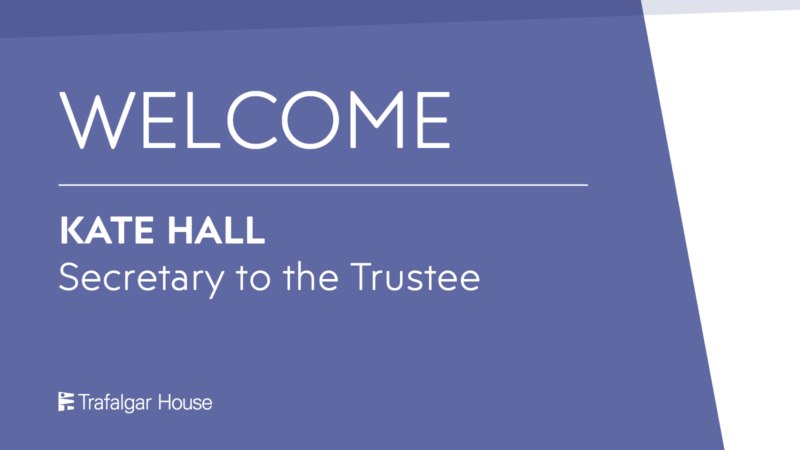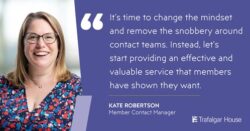First-time outsourcing: putting people first


Many of the unsettling and disruptive employment changes that outsourcing inevitably creates can be remedied if the employer considers including the roles of the pensions team at the start of the administration tender process. Under the Transfer of Undertakings Protection of Employment (TUPE) regulations, and if all parties agree, in-house teams can transfer their employment to the new third-party administrator.
So how does it work and what are the implications for all involved?
Employers
It’s rare for sponsors and trustees who are looking to outsource administration to include the potential transfer of the pensions team at the outset. This is often because the initial exercise is used to assess the affordability, risk and commercial benefits of outsourcing, with sponsors and trustees looking to understand if they can reduce their long-term costs.
Inevitably, adding TUPE of the in-house team at a later stage impacts the cost of the new administration provider’s offer and can, in some cases, make a significant difference. If the finances still look reasonable including the transfer of staff, the employer then has a decision to make. On one hand, the company may be foregoing some of the savings that were required in the first place, but on the other, it does mean a greater level of scheme knowledge will be preserved during and after the handover, giving a more seamless transition and continuation of service for the scheme and its members.
If TUPE is important to the employer, then identifying suppliers who may be most suitable to their staff in terms of location, culture and service delivery styles could become as important as costs alone.
In-house team
Obviously the most substantial impact is felt by the company’s in-house pensions team themselves. Concern for their immediate employment may be allayed by the TUPE process, but many questions will remain around future benefits, opportunities and work locations.
Initially the employer will take the lead in communication through an employment consultation process. This will identify the team members affected by the move to the external administration provider. At this stage, transparency and an open and honest communication approach are crucial to answer any questions the team may have, and to address the parts of the change they may not have even considered.
Staff wishing to discuss the move will then be introduced to the new provider. This almost becomes a sliding doors moment for the relationship between the two – get it right and TUPE could work well for both sides, but failing to engage early in the process will mean either the team turn down the transfer or leave the new role soon after moving.
To give the transfer the best chance of working, the new administrator should consider some of the following:
- Engage as soon as possible to explain the culture, values and ethos of the company
- Undertake 1-2-1 meetings to learn about each person’s career aspirations and discuss the opportunities they will have if they transfer
- Tackle reticence head on with regular town hall meetings where the transferring team can ask questions, raise issues, and learn more about the process. Also take the opportunity to share business and team updates so they feel included and informed
- Utilise a range of staff – not just senior management – at meetings to give different perspectives on the company and day-to-day working life. Introducing a mix of team members from across the operation will be more approachable for new recruits
- Make sure you engage with each person’s unique situation and discuss how flexible hours, tailored training and remote working will help them make a success of the move
Third Party Administrator
For the new administrator, accepting a people transfer is not simply a tactical decision to secure a contract with a new client; it also has many significant operational benefits.
Firstly, with regards the scheme itself, it’s clear that keeping the existing team will be extremely beneficial for retaining valuable scheme and member knowledge. Such knowledge will help ensure not just a smooth transition, but a more seamless start to the running of the scheme once onboard. This will reduce teething problems and address those inevitable less formally documented quirks and idiosyncrasies.
More widely, bringing in an experienced team will also be simpler than hiring completely new staff. You will also find that they hit the ground running far quicker – meaning any induction processes and training are easier and less time-consuming than a brand-new hire.
There is also the potential that the new team may have capacity to take on roles with other clients too, helping maintain service levels across the wider client base and enable the administrator to react to peaks of demand.
Scheme members
For scheme members, it’s clear that the main benefit is familiarity. Many will have dealt with the in-house pensions team directly with some being colleagues and friends. These connections, along with the assurance of the scheme knowledge that the team brings with them, will likely be comforting to members and be seen as an endorsement of the new administrator’s credentials. This helps ensure that the first few months after handover are as seamless for members as possible.
In summary
For many sponsors and schemes that have always had an in-house pensions team, the idea of outsourcing administration – let alone transferring the in-house team – can be a daunting one.
As outsourcing is most commonly pursued because of external commercial, risk and technology pressures, rather than a real desire to move the administration, many trustees do not always start the process with a great deal of understanding. Fortunately, the administration handover process itself is tried and tested and, with an effective project plan and a new administrator experienced in first time outsourcing, it’s nothing to fear.
Following recent global events, there’s now a strong argument that there has never been a better time to undertake a TUPE exercise. With many good-quality administrators adapting systems and processes proficiently to meet the need for remote working, the requirement for a scheme to consider outsourcing to a company based locally-enough to suit the internal pensions team is removed. It’s now possible to introduce high-quality administrators that can offer a flexible and rewarding remote roles for in-house team members in any location.
With working culture in the UK bringing more of a welcome focus on staff wellbeing and work-life balance, as well as new and different career opportunities, the chance to work for a specialist provider is often well-received by teams, as long as they are engaged and supported throughout the transfer process.
With cost savings and risk mitigation for both the sponsor and scheme, a first time outsourcing and TUPE project is now the right solution for many trustees. And, with employment location no longer being so much of an issue, the options for a new viable administrator have opened-up significantly.
Lisa Beckett is HR Manager at Trafalgar House.


